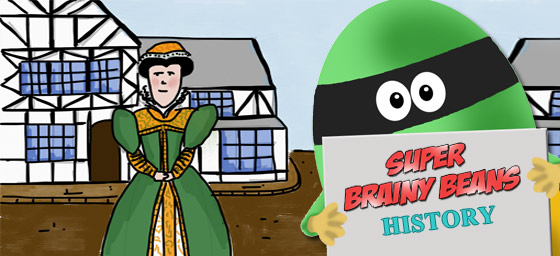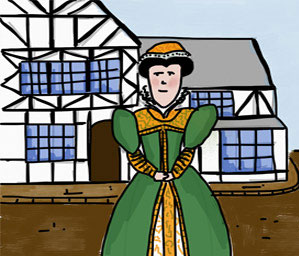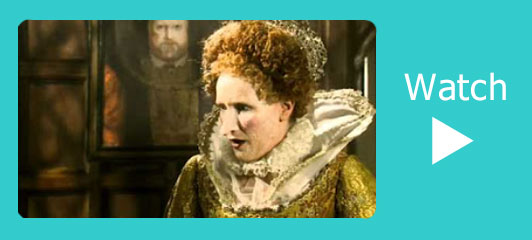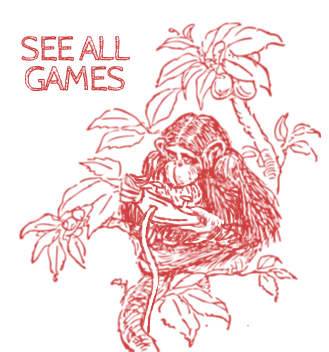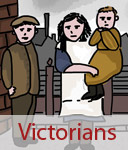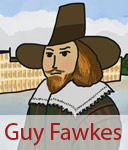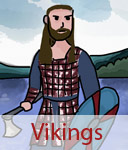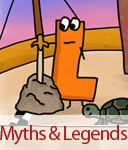The Tudors for kids KS2
The Tudors for kids KS2 learning at Primary School. Homework help on the history of the Tudors, Tudor Britain and Henry VIII.
Time: 1485AD - 1603AD
Who were the Tudors?
The Tudors are one of the most famous families ever to rule England, and their time on the throne is remembered as a period full of drama, change, and adventure. They ruled England for 118 years, from 1485, when Henry Tudor defeated King Richard III at the Battle of Bosworth and became King Henry VII, until 1603, when Queen Elizabeth I died without any children to take her place.
During this time, England saw huge changes. Henry VIII broke away from the Catholic Church and created the Church of England, Elizabeth I defeated the Spanish Armada, and Tudor explorers set off to discover new lands. Tudor times were also famous for their grand palaces, exciting court life, and strict punishments.
The Tudors are remembered as some of the most colourful and powerful rulers in history, each with their own big personalities and stories that still fascinate us today.
 History on the net - The Tudors
History on the net - The TudorsThis website covers a huge amount of information on the Tudors. Topics include Tudor Monarchs, Tudor food, entertainment, the Spanish Armada and more...
Tudor Kings and Queens
There were six Tudor Kings and Queens who ruled England between 1485 and 1603. Each one left their mark on history in very different ways.
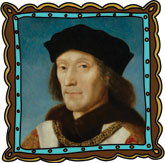
Henry VII - 1485-1509
Henry VII became king after defeating Richard III at the Battle of Bosworth Field in 1485. This ended the Wars of the Roses and began the Tudor dynasty. He was clever with money, making England richer and more stable after years of war. Henry married Elizabeth of York to unite the warring families of Lancaster and York, creating the famous Tudor Rose.
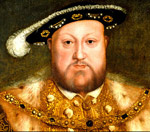
Henry VIII - 1509-1547
Henry VIII, son of Henry VII, is one of the most famous kings in English history. He loved showing off his wealth with magnificent palaces, grand feasts, and glittering clothes covered in jewels. But he was also known for his bad temper — if you upset him, you could lose your head!
Henry VIII is most famous for having six wives:
- Catherine of Aragon – She had a daughter, Mary, but no son. Henry divorced her.
- Anne Boleyn – She gave birth to Elizabeth, but Henry accused her of treason and had her executed.
- Jane Seymour – She gave Henry a son, Edward, but sadly died two weeks later.
- Anne of Cleves – Henry didn’t like her, so their marriage was annulled after just six months.
- Catherine Howard – She was very young (only 19) and was executed for treason.
- Katherine Parr – She outlived Henry and cared for his children.
Henry also changed the history of England forever by creating the Church of England, breaking away from the Catholic Church so that he could divorce Catherine of Aragon.
- Henry VIII sometimes executed people for looking at him the wrong way.
- He was so tall and strong that he played real football and jousting tournaments.
- He owned over 2,000 suits of clothes and wore them all to show off his wealth.
 Hampton Court Palace- Surrey, UK
Hampton Court Palace- Surrey, UKExplore Henry VIII's majestic palace including his magnificent state apartments, haunted gallery, the formal gardens and the famous maze.
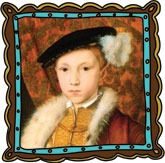
Edward VI - 1547-1553
Edward VI was Henry VIII’s only son, but he was only 9 years old when he became king. Edward was very clever and deeply religious, but he was often ill. He ruled for just six years before dying at the young age of 15.
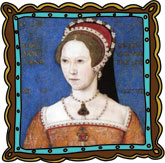
Jane Grey - July 1553
After Edward’s death, his cousin Lady Jane Grey was chosen to be queen. She was only 16 years old and is remembered as the “Nine Days’ Queen” because her reign lasted just over a week before she was arrested and later executed.
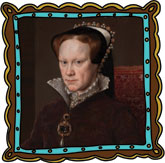
Mary I - 1553-1558
Mary I, daughter of Henry VIII and Catherine of Aragon, became queen after Lady Jane Grey. She was a strong Catholic and wanted England to return to the Catholic Church. Mary ordered many Protestants to be executed, earning her the nickname “Bloody Mary.”
Mary married King Philip II of Spain, but the marriage was unpopular in England, and she never had any children. She died in 1558, and the throne passed to her half-sister Elizabeth.
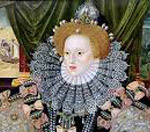
Elizabeth I (1558-1603)
Elizabeth I, daughter of Henry VIII and Anne Boleyn, was the last Tudor ruler. She reigned for 45 years, one of the longest in English history. Elizabeth’s reign is known as the Golden Age.
She encouraged exploration, with sailors like Sir Francis Drake and Sir Walter Raleigh discovering new lands. England also became famous for its literature and music, especially the plays of William Shakespeare.
Elizabeth never married, and people often called her the “Virgin Queen.” When she died in 1603, there was no heir, and the crown passed to James VI of Scotland, beginning the Stuart period.
- Elizabeth I loved bright red wigs to hide her grey hair!
- She had over 200 portraits painted of her to remind everyone how powerful she was.
Tudor Britain
Life in Tudor times could be very different depending on whether you were rich or poor. Some people lived in grand houses and wore fine clothes, while others struggled to survive.
Rich vs poor
Although Elizabethan England was a wealthy country, many people lived in poverty. The rich owned large estates and enjoyed a comfortable lifestyle, while the poor often had to beg or work very hard for little pay. In 1563, the government introduced the Poor Law, which allowed money to be collected from local people to help those in need.
Tudor houses
Rich Tudors lived in large, impressive houses or country mansions with many rooms, glass windows, and fancy furniture. These houses often had beautiful gardens and decorations to show off wealth. Poor Tudors lived in small cottages made of wood and straw, with just one or two rooms and a thatched roof. The floor was usually just mud, and whole families often lived and slept in the same space.
Food and drink
Tudor food depended on how rich you were.
- Rich Tudors feasted on meat, fish, pies, and exotic fruits and spices brought from abroad. They often drank wine or ale.
- Poor Tudors mostly ate bread, pottage (a kind of thick soup), and vegetables they grew themselves. They drank weak beer or water, which was often unsafe.
Clothes and fashion
Tudor clothes showed your place in society. Rich people wore bright, colourful fabrics like silk, velvet, and fur, often decorated with jewels. Their clothes were heavy and layered to show off their wealth. Poor people wore simpler clothes made from wool or linen, dyed with natural colours like brown or grey.
Entertainment and pastimes
Tudors loved to be entertained! Rich people enjoyed banquets, dancing, music, and hunting, while ordinary people enjoyed fairs, markets, bear-baiting, cockfighting, and plays. The theatre became especially popular during Elizabeth I’s reign, with William Shakespeare’s plays drawing huge crowds.
Education and jobs
Education was mostly for boys from rich families. They learned Latin, reading, writing, and arithmetic. Girls were usually taught at home how to run a household. Poor children often didn’t go to school at all—they had to work. Jobs included farming, weaving, blacksmithing, or being a servant in a rich household.
Tudor medicine
Medicine in Tudor times was very basic. People believed illness was caused by bad air or even evil spirits. Treatments included using herbs, leeches, or bloodletting. Many Tudors were superstitious—they believed in witches, charms, and magic. Some even thought carrying certain herbs or charms could keep them safe from the plague.
Crime and Punishment
Crime was taken very seriously in Tudor England. Punishments were harsh to scare others into obeying the law. Thieves might be whipped or put in the stocks in the middle of town. More serious crimes like treason were punished by hanging or even execution. Public punishments were a form of entertainment for the crowd as well as a warning to others.
- Rich Tudors sometimes ate pies with live birds inside—the birds would fly out when the pie was cut open
- People often brushed their teeth with ashes, urine, or crushed bones.
- If someone got a headache, they might put a live frog on their head to draw the pain out.
 BBC Tudor Britain
BBC Tudor BritainAn era of change and triumph, from Henry VIII's Reformation to Elizabeth and the Armada.
 Hever Castle - Kent, UK
Hever Castle - Kent, UK Hever Castle is located in the village of Hever. It began as a country house, built in the 13th century. From 1462 to 1539 it was the seat of the Boleyn family.
Religion in Tudor England
Religion was one of the most important parts of Tudor life, but it also caused a lot of arguments, changes, and even fear. Everyone in England was expected to follow the same faith as the ruler of the country, so when the monarch changed their mind about religion, the people had to change too.
Henry VIII and the Church of England
At first, England was a Catholic country, and the Pope in Rome was the head of the Church. Henry VIII was even called a “Defender of the Faith” by the Pope. But things soon changed.
Henry wanted to divorce his first wife, Catherine of Aragon, because she did not give him a son. The Pope would not allow it. Henry became angry and decided to break away from the Catholic Church. In 1534, he made himself head of a new church, called the Church of England. This was the start of the English Reformation.
Now Henry could divorce Catherine and marry again. He also closed many monasteries (places where monks and nuns lived) and took their money and land for himself.
Catholics vs Protestants
After Henry’s death, England switched back and forth between Catholic and Protestant rulers.
Catholics → Followed the Pope, liked decorated churches, and kept old traditions.
Protestants → Didn’t follow the Pope, wanted simpler churches, and wanted everyone to understand services and the Bible.
- Edward VI, Henry’s son, was a Protestant. Under him, churches were made plainer, services were in English, and huge changes were made to how people worshipped.
- Mary I, Henry’s daughter, was a Catholic. She tried to change England back to Catholicism. People who refused were punished, and that is why she became known as “Bloody Mary.”
- Elizabeth I, Mary’s sister, was a Protestant. She created a “middle way” that tried to bring peace between Catholics and Protestants, but religion was still a cause of tension throughout her reign.
Tudor Explorers
The Tudor period was an exciting time for exploration. New lands were being discovered across the oceans, and English sailors wanted to find riches, trade, and new places to settle. Two of the most famous Tudor explorers were Sir Francis Drake and Sir Walter Raleigh.
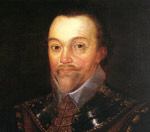
Sir Francis Drake
Sir Francis Drake is remembered as one of England’s greatest explorers and sailors. He was the first Englishman to sail all the way around the world (a journey that took almost three years!). His adventures began in Africa, where sadly, he took part in the slave trade by capturing people and selling them in the Americas.
In 1577, he set off on his most famous voyage. As he sailed around the world, Drake attacked Spanish ships and ports, stealing their treasure. This made him a hero in England but hated by the Spanish! When he returned home, he brought back ships full of gold and riches. Queen Elizabeth I was so impressed that she knighted him on his ship, making him Sir Francis Drake.
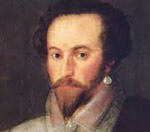
Sir Walter Raleigh
Sir Walter Raleigh was not only an explorer but also a soldier, writer, and favourite of Queen Elizabeth I. He became well known at court, with stories saying that he once laid his cloak over a puddle so the Queen would not get her feet wet.
Raleigh led several expeditions across the Atlantic Ocean to the Americas, where he hoped to find gold and land for England. He helped establish the first English colony in North America, called Roanoke, though it later mysteriously disappeared.
From his travels, he brought back new foods to Europe, including potatoes and tobacco, which were completely unknown in England before. These would later become very popular.
- Sailors on Tudor ships often suffered from scurvy due to lack of vitamin C, causing rotting gums and missing teeth.
- Rats and lice were everywhere on ships, and sailors sometimes ate hard, mouldy biscuits called ship’s biscuits.
The Battle of Bosworth
How did the Battle of Bosworth start?
In the late 1400s, England was in the middle of a long fight for the throne called the Wars of the Roses. Two powerful families wanted to be king: the House of Lancaster (with a red rose) and the House of York (with a white rose).
By 1485, the King of England was Richard III, from the House of York. But many people thought Richard was cruel and unfair. His enemy was Henry Tudor, a Lancastrian, who believed he had a right to be king. Henry raised an army in France and marched into England to challenge Richard. The two sides met at Bosworth Field on 22nd August 1485.
Who won?
The fighting was fierce. Richard III led a charge straight at Henry Tudor, hoping to end the battle quickly by killing him. But Richard’s plan failed. Some of Richard’s allies, who he thought would support him, actually turned against him and fought for Henry instead.
Richard was killed in battle, becoming the last English king to die in combat. Henry Tudor was crowned king on the battlefield with Richard’s crown.
What happened after the battle?
Henry Tudor became King Henry VII, the first king of the Tudor dynasty. To unite the country, he married Elizabeth of York, joining the red and white roses together as the Tudor rose. This marriage ended the Wars of the Roses and brought peace to England after years of fighting.
The Spanish Armada
How did the Spanish Armada start?
In 1588, King Philip II of Spain wanted to punish England. He was angry that English sailors, like Sir Francis Drake, were raiding Spanish ships and stealing treasure from the New World. He was also angry that Queen Elizabeth I had made England a Protestant country and refused to marry him. Philip decided to send a huge fleet of ships, known as the Spanish Armada, to invade England.
The Spanish planned to sail through the English Channel and join with an army waiting in the Netherlands. Together, they hoped to march into England, defeat Queen Elizabeth, and make the country Catholic again.
But things didn’t go as planned. The English navy, led by Lord Howard and Sir Francis Drake, was ready to fight. The English ships were smaller, faster, and easier to move than the heavy Spanish galleons. Fierce sea battles broke out as the two sides fought in the Channel.
One night, the English set eight old ships on fire and sent them sailing into the middle of the Spanish fleet while they were anchored near Calais in France. This caused chaos! The Spanish ships panicked and scattered to escape the burning “fire ships.”
Who won?
The battles continued, but the English navy managed to drive the Spanish away. The clever tactics of the English, plus their faster ships and long-range cannons, gave them the advantage. In the end, England was victorious, and Queen Elizabeth celebrated the great victory.
What happened to the Spanish Armada?
After retreating, the Armada was forced to sail all the way around Scotland and Ireland to get back to Spain. Along the way, terrible storms wrecked many of the ships, and only half of the Armada made it home safely.
This defeat was a huge blow to Spain’s power and a proud moment for England. Queen Elizabeth I was so pleased that she gave her famous speech to the troops at Tilbury, saying she had “the heart and stomach of a king.”
- During battles, soldiers often lost fingers, ears, or even eyes in hand-to-hand combat.
- After battles, the bodies of the dead were sometimes left to rot in the sun.
 BBC - The Spanish Armada
BBC - The Spanish ArmadaA history of The Spanish Armada, how it started and what happened in the attack.
What happened to the Tudors?
The Tudors ruled England from 1485 until 1603. They were one of the most powerful and colourful families in history, but their dynasty (family line of rulers) eventually came to an end.
The last Tudor monarch was Queen Elizabeth I. She ruled for 45 years and made England strong, rich, and famous for its explorers, writers, and musicians. But Elizabeth never married and never had children. This meant there was no Tudor heir to take the throne after her.
When Elizabeth died in 1603, the crown passed to her cousin, James VI of Scotland, who became James I of England. He was from the Stuart family, not the Tudors.
So the Tudor period ended, but the Stuarts carried on ruling England and Scotland. The Tudors may have gone, but their influence is still remembered today—in their palaces, portraits, and the huge changes they brought to England.

